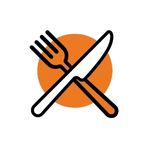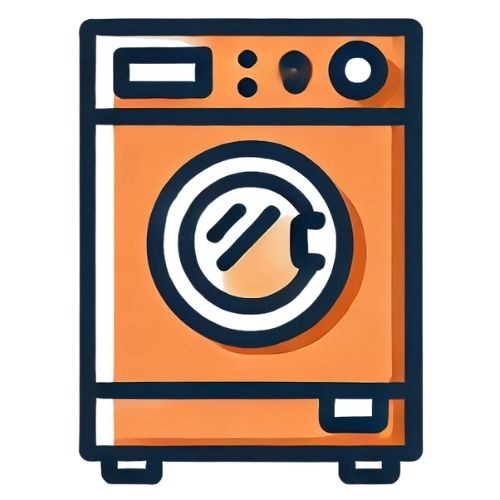
Inflation affects the daily cost of living for every South African. If you’re buying groceries, filling up your car, or paying down a home loan, inflation affects how far your money stretches. It refers to the steady rise in the prices of goods and services over time. When inflation rises, each rand you earn or save can buy less than before. In South Africa, inflation is tracked closely by the South African Reserve Bank and Statistics South Africa, as it influences interest rates, loan repayments, and wage negotiations.
Key Takeaways
- Inflation reduces purchasing power: As the general price level of goods and services rises in South Africa, each rand buys less than before. This affects everyday expenses like food, fuel, and housing, putting pressure on household budgets.
- CPI categories show where inflation hits hardest: South Africa’s inflation is measured using the Consumer Price Index, with categories like housing, food, transport, and miscellaneous goods showing the biggest contributions to rising costs.
- Preparation can reduce the financial impact: By saving regularly, managing debt, and adjusting monthly budgets, South Africans can better cope with the financial effects of inflation and avoid unnecessary borrowing during high-cost periods.
About Arcadia Finance
Apply for a loan easily with Arcadia Finance. There are no application fees, and you can choose from 19 reputable lenders approved by South Africa’s National Credit Regulator. Enjoy a fast and secure process tailored to your financial needs.
What Is Inflation?
Inflation describes the overall rise in the cost of goods and services within a country over a period of time. This does not imply that every item becomes more expensive. For instance, the price of electronics might remain steady or even decrease. However, inflation reflects the average percentage increase in prices each year across a broad range of items. As prices climb, the value of the rand effectively declines, meaning the same amount of money can buy fewer goods or services than it could in the past.
The Everyday Impact of Inflation Rates in South Africa
Inflation in South Africa directly affects daily spending. It shows up in higher grocery prices, rising utility bills, and increased bond repayments due to interest rate changes. Households must adjust their budgets more often, while many South Africans see their money losing value.
For businesses, inflation leads to higher costs for raw materials, fuel, and other inputs. If these costs aren’t offset by price adjustments, profit margins can narrow, affecting growth and jobs. This may also reduce investment in local operations.
Inflation does have some benefits when kept under control. In a stable economy, a moderate inflation rate, such as 2 percent, can encourage spending and business activity. It supports wage growth and expansion. However, when inflation outpaces wage increases, households feel the pressure, which may slow consumer demand and reduce confidence in the economy.
Understanding inflation also means knowing the story behind our currency. The history of the South African Rand is a fascinating journey through decades of economic change, political events, and yes, rising prices. See how past inflation episodes shaped our everyday money.

Why Does Inflation Happen?
Inflation can be caused by several different factors, one of which is when the economy grows rapidly and consumer spending increases. In this situation, more money circulates in the economy, often outpacing the actual growth in goods and services. This increased demand places pressure on available products, resulting in higher prices across many sectors.
When households and businesses have greater access to money, their spending tends to rise. However, if the availability of goods and services does not expand at the same pace, the imbalance between supply and demand drives prices upwards. This is a common cause of inflation during periods of strong economic activity.
To keep inflation in check, the South African Reserve Bank may adjust interest rates. By raising rates, the Bank makes borrowing more expensive and encourages saving rather than spending. This helps reduce the amount of money in circulation, which can slow down rising prices.
The cost of energy is another significant driver of inflation. When fuel and electricity prices increase, the costs of manufacturing, transportation and distribution also rise. Since the economy relies heavily on these inputs, any increase in energy costs tends to affect a wide range of products and services, contributing further to overall inflation.

Breaking Down Inflation Rate in South Africa by Categories
Inflation in South Africa is measured by the Consumer Price Index (CPI), which tracks the average change over time in the prices of goods and services purchased by households. The CPI is divided into various categories, each representing a different segment of household expenditure. Understanding how these categories contribute to the overall inflation rate can help individuals and businesses make informed financial decisions.

Housing and Utilities
This category holds the largest weight in the CPI, accounting for approximately 23% of the total basket. It includes expenses related to rent, electricity, water, and other housing-related costs. In December 2024, housing and utilities experienced an annual inflation rate of 4.4%, contributing 1.0 percentage point to the overall inflation rate.

Food and Non-Alcoholic Beverages
Food and non-alcoholic beverages are essential components of household spending. In December 2024, this category saw an annual inflation rate of 2.5%, contributing 0.5 percentage points to the headline inflation figure . Notably, the inflation rate for this category increased to 4.0% in April 2025, marking the highest rate since September of the previous year.

Miscellaneous Goods and Services
This diverse category includes personal care products, insurance, and financial services. In December 2024, miscellaneous goods and services experienced an annual inflation rate of 6.6%, contributing 1.0 percentage point to the overall inflation rate.

Alcoholic Beverages and Tobacco
Alcohol and tobacco products are subject to excise duties, which can influence their prices. In December 2024, this category had an annual inflation rate of 4.3%, contributing 0.3 percentage points to the headline inflation figure.

Transport
Transport costs, including fuel prices, can significantly impact the overall inflation rate. In March 2025, South Africa’s annual inflation rate dropped to 2.7%, its lowest since June 2020, primarily due to an 8.8% reduction in fuel prices.

Education
Education costs are surveyed annually and can vary based on tuition fees and other related expenses. In March 2025, education fees increased by 4.5%, a moderation compared to the 6.4% rise in the previous year.

Recreation and Culture
This category encompasses expenses related to entertainment, sports, and cultural activities. While specific inflation rates for this category were not detailed, changes in consumer preferences and technological advancements can influence prices in this segment.

Restaurants and Hotels
Spending on dining out and accommodation services falls under this category. In December 2024, restaurants and hotels experienced an annual inflation rate of 4.3%, contributing to the overall inflation rate.

Clothing and Footwear
Clothing and footwear prices can be influenced by seasonal trends and import costs. While specific figures were not provided, this category remains a component of the CPI and can affect the overall inflation rate depending on market dynamics.

Health
Health-related expenses, including medical services and products, are essential for households. Changes in healthcare policies, availability of services, and pharmaceutical prices can impact this category’s inflation rate.

Communication
This category covers expenses related to telephone and internet services. Technological advancements and market competition can lead to price fluctuations in this segment.

Household Contents and Services
Household contents and services include furniture, appliances, and domestic services. Economic factors, import costs, and consumer demand can influence prices in this category.
Want to know how experts spot inflation before it bites your budget? Know what are financial indicators to learn about the warning signs economists and investors track, from consumer price indices to the price of petrol. It’s the perfect way to become savvy about the forces that shape your spending power.

How Inflation Can Affect Consumer Behaviour
Inflation in South Africa has a direct effect on how individuals manage their everyday expenses and adjust their spending habits. Although the term “consumer inflation” is frequently mentioned, many people may not fully understand how it alters purchasing behaviour. When the cost of living rises, households are forced to reconsider where and how they spend their income. This shift affects everything from basic shopping decisions to long-term financial planning.
In South Africa, inflation influences spending patterns in several key ways:
Reduced Buying Power
When inflation increases, the value of money declines. This means that with the same income, individuals can afford fewer goods and services. As a result, people often reduce their discretionary spending. For example, instead of purchasing premium coffee or imported snacks, many consumers start choosing lower-priced alternatives that serve the same purpose.
Lower Brand Loyalty
In times of high inflation, brand loyalty tends to decrease. Shoppers are more willing to switch to unfamiliar or generic products if they offer better value. For instance, if a preferred cleaning product becomes too expensive, a customer may choose a cheaper version. If the substitute performs well, they may permanently shift to the more affordable option, even if the original brand becomes more affordable again.
Greater Focus on Promotions and Discounts
When prices rise consistently, people become more aware of special offers and are more likely to act on them. Sales events, multi-buy deals, and limited-time discounts draw more attention because they offer an opportunity to stretch the household budget further. Consumers are more inclined to purchase larger quantities of frequently used items when discounts are available, as this allows them to avoid future price increases and reduce overall monthly expenses.

How Do You Prepare For The Effects Of Inflation?
Start By Saving Consistently
Inflation cannot be prevented, but you can take steps to reduce its impact on your personal finances. The first step is to focus on saving. Make a habit of putting aside a portion of your income regularly. Building an emergency fund gives you a financial buffer when everyday expenses go up. This fund should be kept separate from your normal spending money and should only be used when necessary, such as during periods of steep price increases or unexpected costs. Having savings in place makes it easier to cope when the cost of goods and services goes up.
Lower Your Debt Obligations
Another useful step is to deal with any existing debt. Try to pay off as much of your outstanding balances as possible and avoid taking on new debt unnecessarily. If you cannot pay off the full amount, make sure that you are keeping up with all monthly instalments without fail. By doing this, you will avoid interest charges building up and harming your credit profile. Maintaining a healthy credit score can also give you access to credit when you need it, such as applying for a loan during an emergency. However, if you’ve built up a proper emergency fund, you may not need to rely on loans in the first place.
Review And Adjust Your Monthly Budget
It is also worth looking closely at your monthly budget. If you do not already have a budget in place, start one immediately. If you already have one, go through it in detail. Identify areas where you can reduce your spending and focus only on what is essential. Make sure that your budget reflects your current priorities, especially if prices have increased recently. By trimming unnecessary expenses and sticking to your plan, you will be able to put the extra money into savings. This gives you greater control and flexibility when inflation affects the cost of living.
Conclusion
Inflation affects every part of life in South Africa, from the price of bread to the cost of petrol. While it cannot be avoided, it can be managed. By understanding what drives inflation and how it impacts different spending categories, individuals and households can take steps to protect their finances. This includes building a savings buffer, keeping debt under control, and regularly reviewing budgets. Staying informed about inflation trends and how the South African Reserve Bank responds with interest rate changes can also help you make better financial decisions, especially during times of economic uncertainty.
Frequently Asked Questions
The inflation rate changes each month and is published by Statistics South Africa. As of April 2025, the annual inflation rate stood at 5.3%, influenced mainly by food and fuel prices.
Inflation is measured using the Consumer Price Index (CPI), which tracks the average change in prices of a fixed basket of goods and services, such as food, housing, transport, and healthcare.
The South African Reserve Bank monitors inflation and uses tools like interest rate adjustments to keep inflation within the target range of 3% to 6%.
When inflation rises, the real value of money decreases. This means your savings will buy less over time unless they are earning interest at a rate higher than inflation.
Start by building an emergency fund, reducing unnecessary debt, and revising your monthly budget. Keeping track of price increases and focusing on essential spending can help you stay in control of your finances.
Fast, uncomplicated, and trustworthy loan comparisons
At Arcadia Finance, you can compare loan offers from multiple lenders with no obligation and free of charge. Get a clear overview of your options and choose the best deal for you.
Fill out our form today to easily compare interest rates from 19 banks and find the right loan for you.



